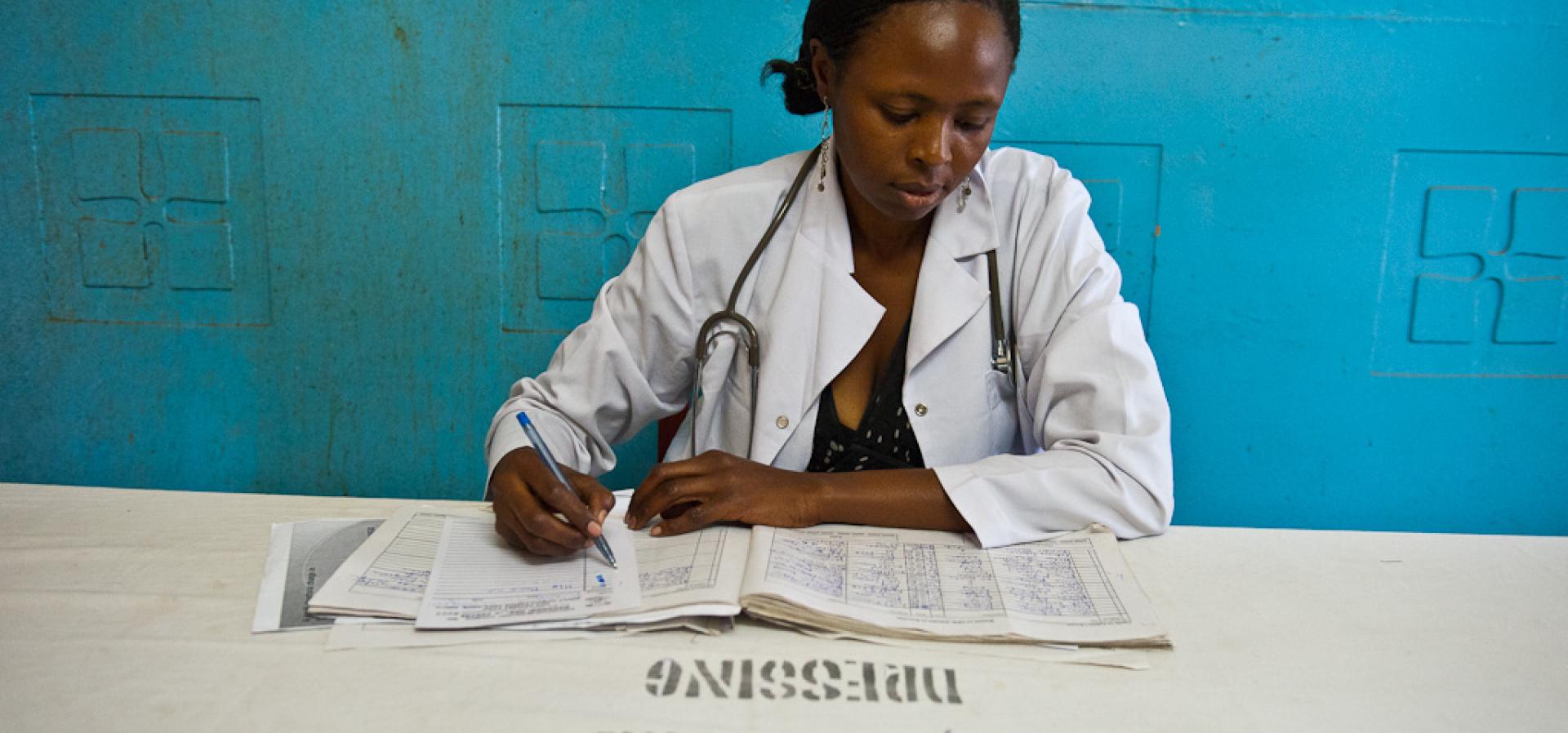
Blog | June 26, 2023
by: Priya Basu, Executive Head, the Pandemic Fund
Originally published on Investing in Health
We live in a world where the risks of pandemics – particularly with zoonotic origins – are growing, driven by climate change, deforestation, changing land use patterns, food systems, water shortages, and urbanization. As the WHO has warned, the question is not if there will be another pandemic, it’s when.
Almost seven million people worldwide lost their lives to COVID-19, according to the WHO, including over half a million in India where I grew up and more than one million in the United States where I live now.
The social and economic ripple effects of the pandemic have been devastating, particularly in the Global South–job losses, children out of school, reversals in development, an additional 70-100 million people living in extreme poverty compared to pre-pandemic years. All this because the world was not prepared to effectively detect and contain the virus from spreading and reaching pandemic proportions. We cannot afford to let this happen again.
Pandemic preparedness must be given priority
We must prioritize sustained funding for countries that need support to build resilience to future health shocks. Investing in pandemic prevention and preparedness for developing countries is investing for the world, with enormous economic and social returns for everyone, everywhere. These may not be visible until an outbreak happens. But the fallout from not being prepared could be huge in comparison to the investments needed.
An analysis for the G20 conducted by the WHO and the World Bank in March 2022 estimated the need for additional, external financing of around $10 million, per year, over the next five years, to strengthen PPR capacity in low- and middle-income countries. Compare this with the trillions of dollars lost in global economic output, not to mention the lives lost from COVID-19.
A new multilateral financing mechanism dedicated to strengthening pandemic prevention, preparedness, and response (PPR)
In April 2022, the G20 finance ministers asked the World Bank to explore setting up a Financial Intermediary Fund to strengthen PPR capacity in low- and middle-income countries. The Bank moved fast. Together with G20 partners, the founding donors, the WHO, civil society, and other partners, we were able to develop and establish the Pandemic Fund by September 2022, underpinned by a robust, inclusive and agile governance structure with a strong focus on transparency and accountability. The Pandemic Fund has already raised $2 billion in seed capital from 25 sovereign and philanthropic contributors and moved forward quickly with the first round of funding.
The Pandemic Fund’s vision and business model offer an opportunity to do things differently. First, the Fund has the flexibility to deliver support through a variety of existing institutions, like MDBs, UN agencies and global health initiatives, complementing their efforts and drawing on their comparative advantages. Second, grants from the Pandemic Fund catalyze co-financing for projects from public and private sources, and technical expertise from the WHO and other partners. Blending the grants with MDB loans will make the latter more affordable and incentivize developing countries to do more. Third, the model fosters coordination - breaking silos, and serving as an integrator at every level. It recognizes that pandemic preparedness requires actors to work together to build country capacity in core areas, like better surveillance and detection; stronger public health institutions; health facilities, including primary healthcare, that can cope with emergencies; a robust health workforce, which includes community health workers; and government capacity to coordinate and manage in times of crisis.
It also recognizes that regional and global level efforts are vital, including through public-private partnerships. For example, to support cross-country collaboration on disease surveillance and data sharing; build capacity for the coordinated development, procurement, and distribution of vaccines and other medical countermeasures to ensure access for all; and create well-functioning supply chains. We are already seeing some of this come into play.
The demand from countries is enormous
Our first call for proposals, which closed last month, is a learning exercise. It was eight-times over-subscribed. We received some 180 applications from 129 low- and middle-income countries with requests for over $2.5 billion in grants (against an envelope of $300-350 million) to strengthen capacity for disease surveillance and early warning systems, laboratories, and human resources, including community health workers.
The Pandemic Fund’s first call for proposals has galvanized action, producing strong country- and regional commitments to strengthen PPR, both monetary, where possible, and non-monetary, where financial capacities are stretched. The emphasis on “One Health” shows an appreciation of the interplay between animal and human health, and the environment. And the desire to strengthen cross-border collaboration is encouraging.
The level of demand sends a clear signal that the Global South is serious about investing in pandemic preparedness and strengthening health systems, and that it sees the urgency to act. Yet, in the face of multiple crises – including climate, debt, food insecurity, and rising poverty -- many countries, and particularly the poorest ones, simply don’t have the fiscal space.
According to a recent Word Bank report, government spending on health in many of these countries has already dropped since the height of the COVID pandemic.
This makes additional, external financing – especially grants -- ever more important. And of course, the money must be spent wisely for greatest impact.
Achieving the Pandemic Fund’s promise requires acting with urgency, and through collective action
With the necessary funding, the Pandemic Fund can help close critical PPR capacity gaps at the country level. It can also do more on regional and global initiatives to support developing countries become better prepared for the next pandemic.
This is the time to scale up efforts through collective action. We must work with urgency, applying the lessons learned from COVID-19 and invest adequately in pandemic prevention and preparedness, to build a safer, healthier, and more resilient world. The next pandemic won’t wait for us.
Last Updated: March 11, 2025

